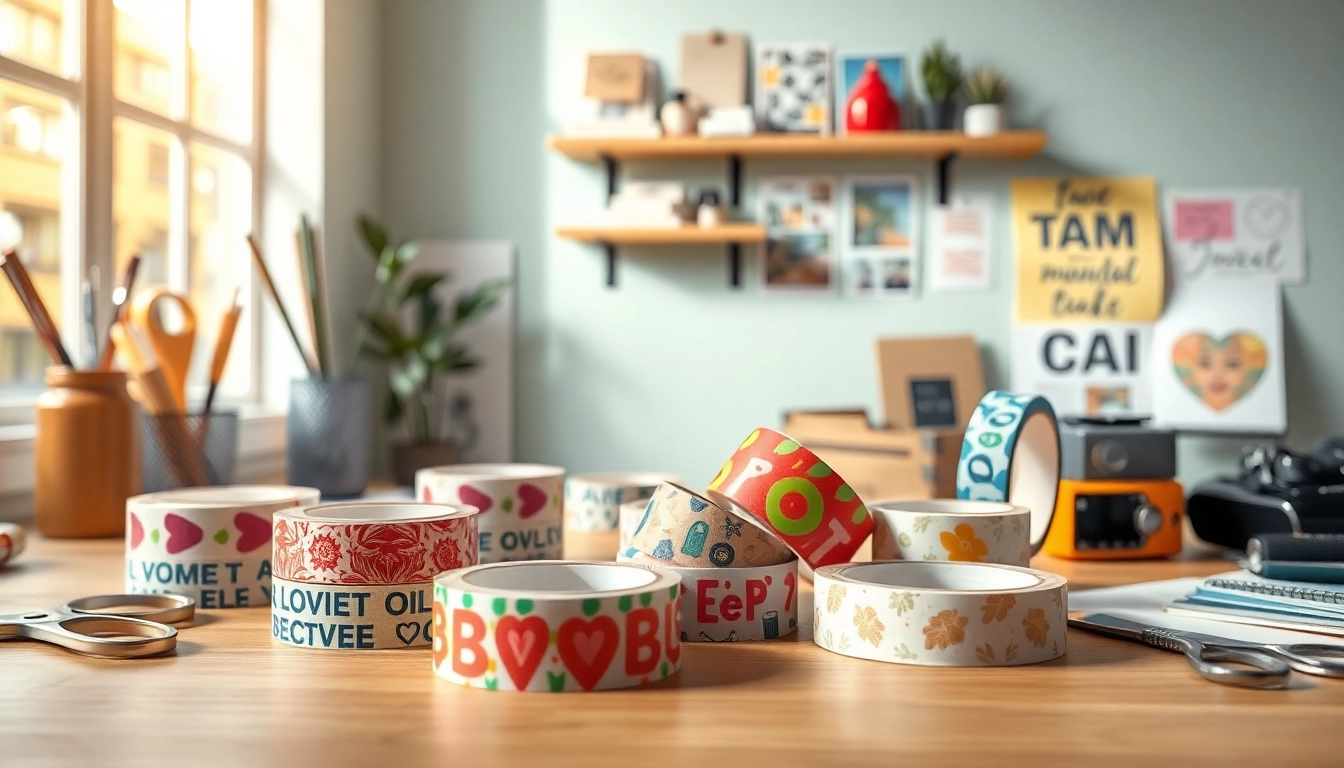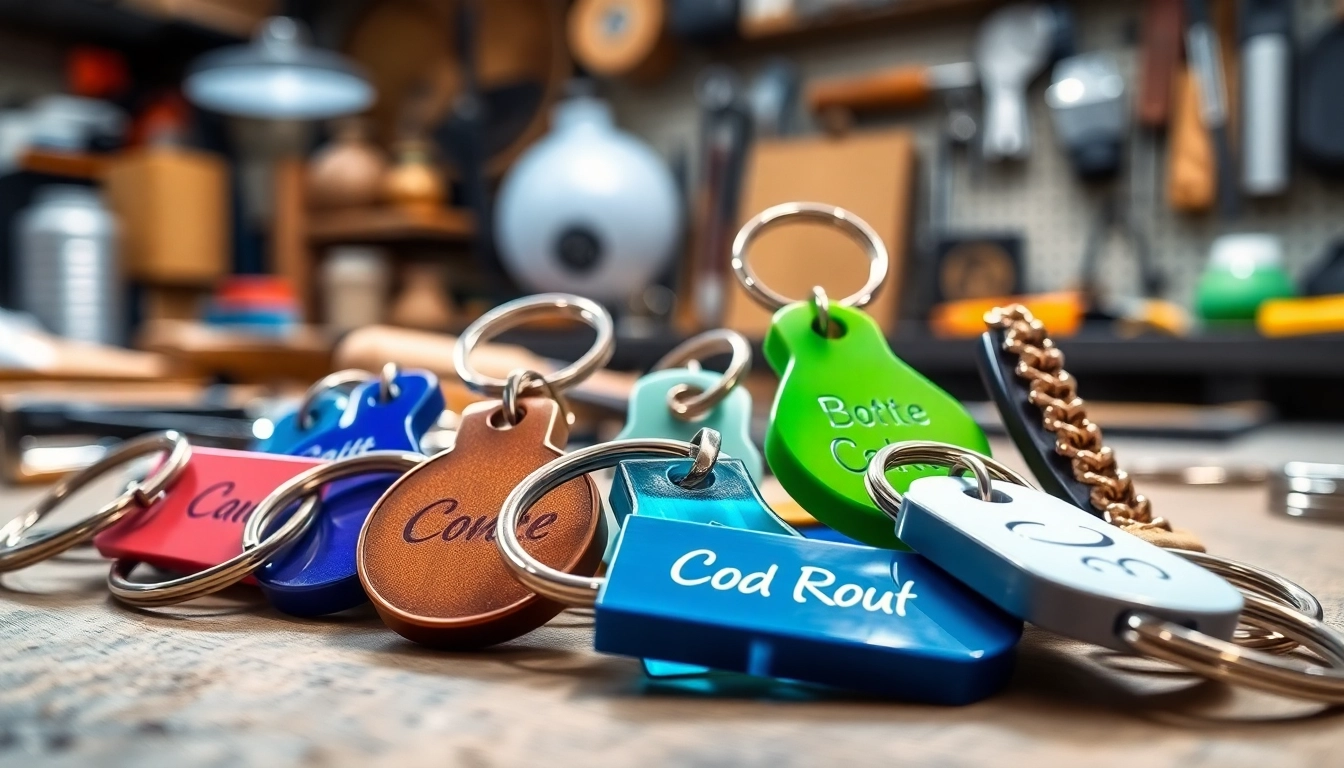Understanding Custom Tape: Features and Types
What is Custom Tape?
Custom tape is a specialized adhesive tape that can be tailored according to various specifications, allowing businesses and individuals to implement customized designs, logos, and messages. This product not only serves a functional purpose of sealing packages and securing goods, but also acts as a powerful branding tool. Custom tape is available in a variety of sizes, colors, and materials, making it suitable for different applications, ranging from shipping and packaging to promotional events.
Materials Used in Custom Tape
The material composition of custom tape plays a crucial role in its effectiveness and application. Common materials include:
- Polypropylene: A lightweight and durable material that is frequently used for packaging and shipping. It comes in clear or opaque finishes, making it ideal for printing designs and logos.
- PVC: Known for its strength and durability, PVC tape is often utilized in industrial applications where resistance to moisture and temperature is crucial.
- Paper: Custom paper tape is eco-friendly and often used in retail and craft applications. It is easily writable, allowing for additional customization at the point of use.
- Biodegradable materials: With growing environmental awareness, many manufacturers are now offering tapes made from recycled or biodegradable materials to minimize environmental impact.
Types of Custom Tape Available
When it comes to custom tape, there are several types to choose from, each serving different purposes:
- Printed Packing Tape: Often used for branding shipments, these tapes feature logos and graphics designed to promote brand identity during the shipping process.
- Masking Tape: This type of tape is typically used in painting and arts as it provides clean lines and can be easily removed without leaving residue.
- Double-Sided Tape: Used for displays or temporary fixations, double-sided tape is adhesive on both sides, making it ideal for mounting or bonding different materials.
- Security Tape: To ensure the integrity of packages, security tapes highlight tamper-proof features and often reveal clear signs if a package has been opened.
Designing Your Custom Tape: Tips and Best Practices
Choosing the Right Design Elements
When designing your custom tape, it is essential to consider elements that resonate with your audience while ensuring functionality. Key design elements include:
- Logo Placement: Ensure that your logo is prominently displayed. The positioning should be recognizable at a glance.
- Typography: Choose fonts that are legible and reflect your brand’s identity. Avoid overly stylized fonts that may compromise readability.
- Color Palette: Select colors that align with your branding strategy. High-contrast combinations tend to stand out and attract attention.
- Graphics and Icons: Simple and relevant graphics can create visual interest without overwhelming the primary message, enhancing brand recall.
Color Theory and Custom Tape
Color is a powerful tool in communication. Understanding color theory can help you harness emotions and perceptions associated with colors. For instance:
- Red: Often associated with urgency, attention, and excitement, making it great for promotions.
- Blue: Conveys trust and reliability, perfect for brands that wish to instill confidence.
- Green: Represents sustainability and health, ideal for eco-friendly products.
- Yellow: Captivates attention and symbolizes happiness, often used for promotional materials.
Utilizing Templates vs. Custom Artwork
While templates offer a quick solution with pre-designed aesthetics, creating custom artwork allows for a unique and tailored touch. Consider these points:
- Templates save time and can be cost-effective, particularly for limited runs.
- Custom artwork represents your brand authentically and can make your tape a conversation starter.
- Mixing both approaches allows for a functional design while still giving office space for personalization. Experiment with different designs to find what resonates most with your target audience.
Applications of Custom Tape in Business and Beyond
Branding and Marketing with Custom Tape
Custom tape is not only about utility; it serves as an essential marketing tool. Incorporating your brand logo and colors on custom tape enhances visibility, especially in shipping, where packages are often handled by multiple parties. Some effective applications include:
- Packaging: Custom tape transforms an otherwise plain box into a branded experience.
- Special Events: Using custom tape on promotional materials enhances brand presence at events like trade shows and exhibitions.
- Retail and Point of Sale: Enhance customer experience with branded taping on bags or boxes.
Packaging and Shipping Solutions
In the realm of packaging, custom tape provides both functional and aesthetic benefits. Businesses can:
- Utilize printed custom tape to reinforce package security while simultaneously advertising.
- Employ different styles of custom tape—such as tamper-evident tape—to ensure product integrity during transit.
- Choose eco-friendly custom tape made from recycled materials, appealing to environmentally conscious consumers.
Creative Uses for Custom Tape
Beyond business, custom tape lends itself to various creative projects. Consider the following inventive applications:
- Arts and Crafts: Use custom tape in scrapbooking, gift wrapping, or DIY projects to add a personal touch.
- Event Decorations: Custom tape can aid in themed decorations for parties, weddings, or corporate events.
- School Projects: Create promotional materials or project displays with custom-designed tape for visual engagement.
The Benefits of Using Custom Tape
Cost-Effectiveness and Versatility
Custom tape is a cost-effective solution for businesses looking to enhance their branding. It can be produced in bulk, reducing per-unit costs and offering a versatile product that caters to various needs—from sealing packages to marketing materials.
Strengthening Brand Identity
A well-designed custom tape can significantly enhance brand identity by creating a cohesive image across different products. Here are ways it helps:
- Consistent branding reinforces brand recognition.
- Unique tape designs can make your packaging stand out in a competitive market.
- Increased visibility during shipping increases the likelihood of customer referrals and impressions.
Eco-Friendly Options for Custom Tape
With rising environmental concerns, many companies now prioritize sustainable practices. Custom tape options made from biodegradable and recycled materials are increasingly available. Benefits include:
- Reducing waste and environmental impact while promoting sustainability.
- Attracting environmentally conscious customers who value brands that invest in green practices.
- Improving company image and trustworthiness by demonstrating responsibility for the environment.
How to Order Custom Tape: Step-by-Step Guide
Finding the Right Supplier
Not all suppliers of custom tape are created equal. When seeking a reliable supplier, consider the following:
- Research customer reviews to gauge quality and service.
- Request samples to evaluate product quality before committing to a larger order.
- Look for suppliers that offer dedicated customer service and consultation to assist with design choices.
Understanding Pricing and Production Time
Pricing for custom tape can vary based on materials, design complexity, and order volume. To ensure your budget stays on track:
- Request detailed quotes from multiple suppliers.
- Ask about bulk discounts or promotions that may lower overall costs.
- Understand the production timeline, as it may affect your planning, especially for seasonal promotions or events.
Finalizing Your Design for Production
After selecting your supplier, you’ll need to finalize your design for production. Here are crucial steps:
- Double-check design elements, ensuring all text is legible and graphics are correctly placed.
- Consult with your supplier for any design specifications or file formats required for submission.
- Discuss proofing options to receive a test product before the full order is processed, thereby ensuring accuracy.



